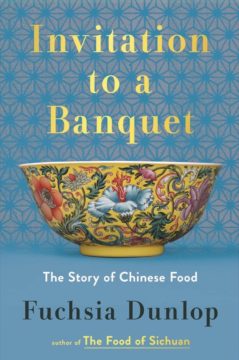Miranda Brown at Literary Review:
 Collectively, the book’s chapters present Chinese cuisine as diverse and dynamic. Dunlop describes how, in the ninth century, the majority of the Chinese population switched from millet to rice, their present staple, after losing the millet-growing north of the country to nomads. She also explains the impact of the chilli pepper. Brought from the Americas in the late 16th century, it imparted a fiery character to the cooking of Sichuan and Hunan, further distinguishing these regional cuisines from the milder fare of coastal cities like Canton. We also hear about borscht, a legacy of the Russians who settled in Shanghai after the Bolshevik Revolution. Shanghainese cooks subsequently put their own spin on the dish, now known as luosongtang, replacing the beetroot with tomatoes to make a dense soup comprising ‘squares of cabbage, slices of carrot and potato and a few tiny fragments of beef’.
Collectively, the book’s chapters present Chinese cuisine as diverse and dynamic. Dunlop describes how, in the ninth century, the majority of the Chinese population switched from millet to rice, their present staple, after losing the millet-growing north of the country to nomads. She also explains the impact of the chilli pepper. Brought from the Americas in the late 16th century, it imparted a fiery character to the cooking of Sichuan and Hunan, further distinguishing these regional cuisines from the milder fare of coastal cities like Canton. We also hear about borscht, a legacy of the Russians who settled in Shanghai after the Bolshevik Revolution. Shanghainese cooks subsequently put their own spin on the dish, now known as luosongtang, replacing the beetroot with tomatoes to make a dense soup comprising ‘squares of cabbage, slices of carrot and potato and a few tiny fragments of beef’.
One of Dunlop’s chief interlocutors is A Dai, proprietor of Dragon Well Manor in Hangzhou, who offers ‘cooking rooted in the local terroir’. But as Dunlop suggests, one does not have to be a chef to be a gourmand.
more here.
